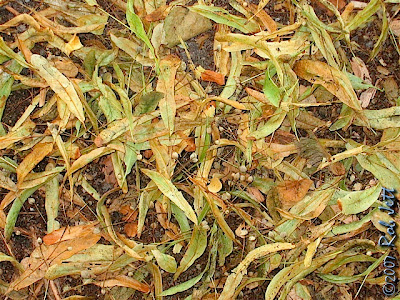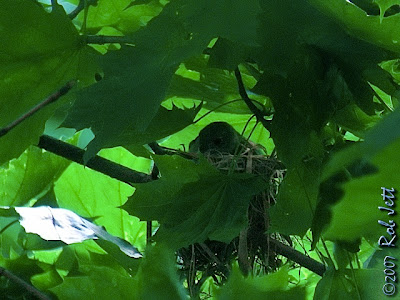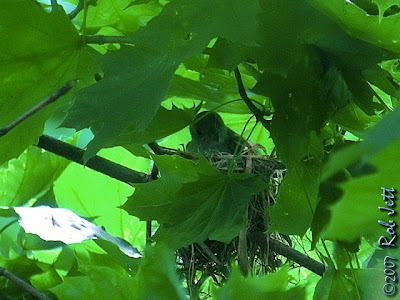
July 7th, Prospect Park
By this point in July, most of the breeding bird species in NYC have completed their breeding cycle. There are, however, some late breeders and a few that have begun a second or third brood. I don't know how Acadian Flycatchers fit into that schedule because they haven't nested in New York City since 1915. I was curious to learn how the pair in Prospect Park were faring. I presume that nesting in a busy urban park could be very stressful (unless you are a House Sparrow or pigeon). Why these Acadian Flycatchers decided to forego a lush, quiet patch of forest to raise a family for a tiny, postage stamp of green in the center of Brooklyn is a mystery. I wanted to keep tabs on them, but would do so from a distance and for brief durations.
It was late afternoon when I walked into Prospect Park on Saturday. Despite a cooling southwest breeze, high humidity and temperatures hovering near 85 degrees made the normally easy stroll feel like a forced march.
Red Admiral (Vanessa atalanta)

The last time I looked in on the flycatchers I found a perfect viewing spot for setting up my scope. Before going home that day I took a piece of stone and scratched three "X"s into the walkway beneath my tripod's feet. When I returned to the area I spotted a Red Admiral butterfly resting in the sun on a boulder. Nearby were the now faded three "X"s. I thanked the butterfly for pointing me in the right direction, then set-up my scope.
The acadian was still sitting on the nest, but acting fidgety. Every minute or so she would stand up, look into the nest and stick her bill down into it. A few times she left, hunting for something to eat in an area no more than 50 feet from the nest. She was never gone for more than 5 minutes. In a rapid sequence of photographs I shot you can get an idea of her curious behavior. I'd like to think that she was fussing over her chicks, but I never observed anything moving in the nest. Adult Acadian Flycatchers are pretty small so their hatchlings are probably fairly well developed by the time their heads stick up above the edge of the nest.



I stayed for about 30 minutes during which time I heard the male's explosive "PEET-suh" whistle several times coming from different directions. He eventually showed up several yards north of the nest, hawking for insects from a perch in a low shrub. Much farther to the south and from the tops of the tree, were the alarm calls of a group of robins followed by the desperate "weEE weEE weEE weEE" cries of a young Red-tailed Hawk.
Bottlebrush buckeye (Aesculus parviflora)
On my way home I stopped near the Picnic House to look at some flowers. Near the southwest corner of the building a large, flowering mass of Oakleaf Hydrangea shrubs seems to have doubled in size since last year. I also noticed a new planting in a small island of dirt in the concrete pathways near the building's entrance. At first, I thought they were chestnut or horsechestnut saplings. The plants had similar palmated leaves and flowers growing in long, upright clusters. Neither should be flowering at this time of year. Also, the small individual flowers had extremely long stamens. They reminded me of hydras or a creature from Greek mythology. I eventually found out that they weren't trees, but shrubs, and they were a native plant called "Bottlebrush Buckeye".
As I continued towards 5th Street a slender tree caught my attention. Every branch and twig was draped with, what looked like, green snap peas. I scanned the adjacent trees because I knew that there was a Redbud along that stretch. The tree turned out to BE the Redbud. Every Spring I look forward to Redbuds beginning to flower. Then the songbirds start to arrive and I forget all about the flashy tree enveloped in fushia blossoms. Saturday was the first time that I noticed its seed pods looked like peas...or even that they grew fruits. What else have I been missing?

No comments:
Post a Comment